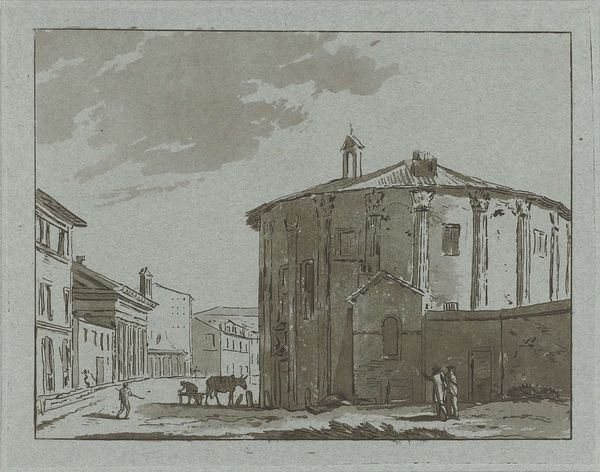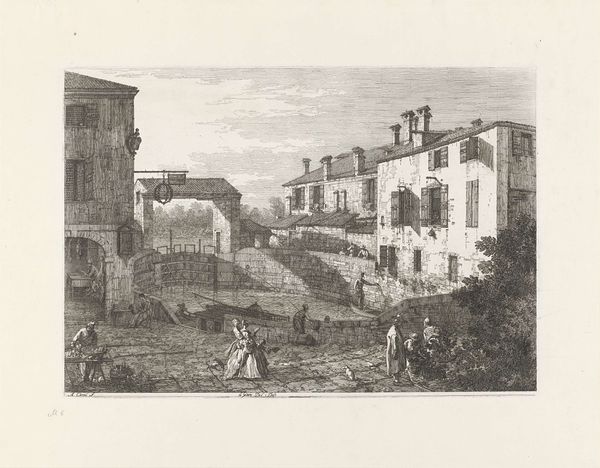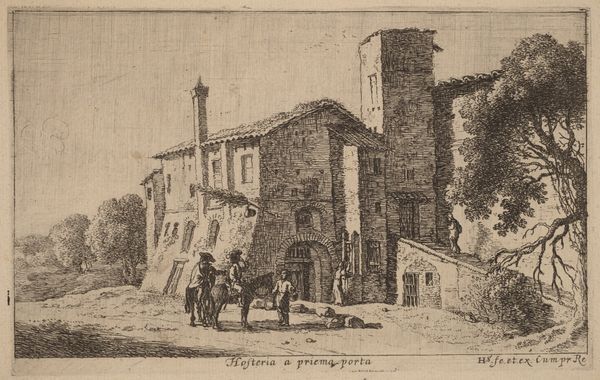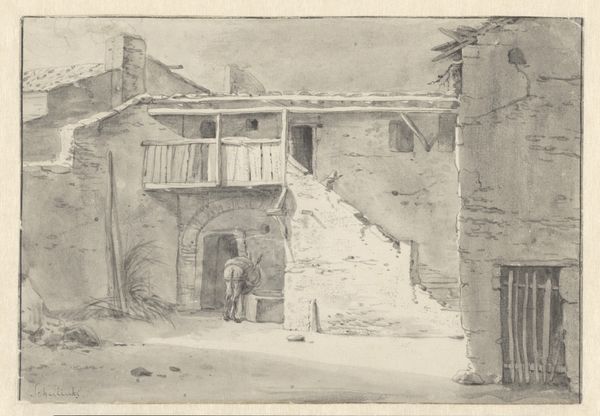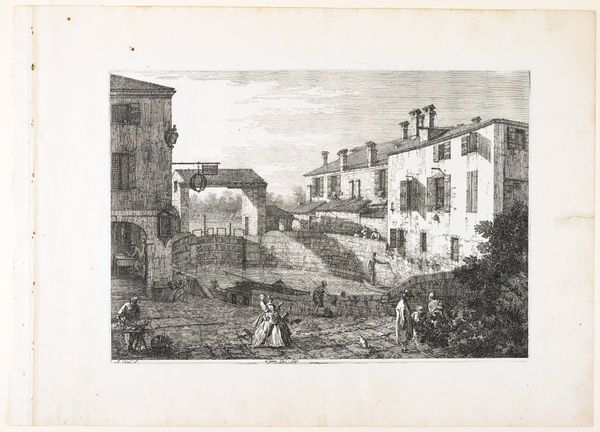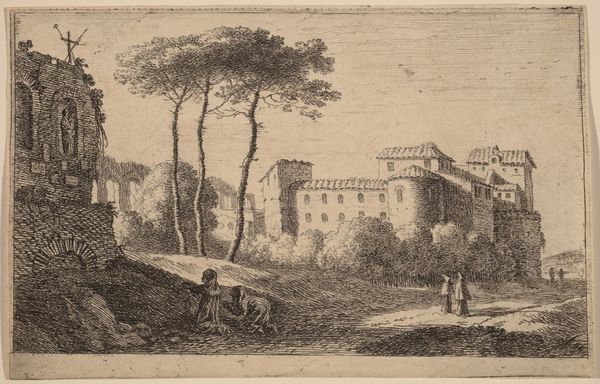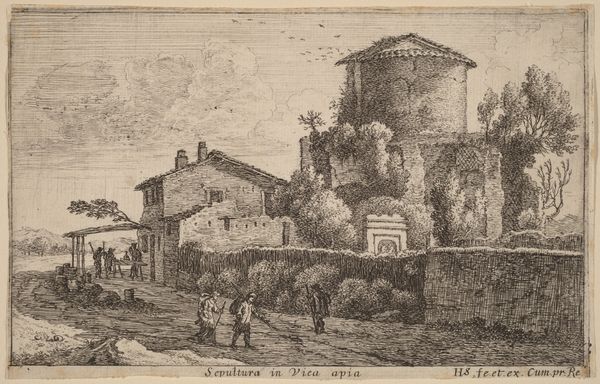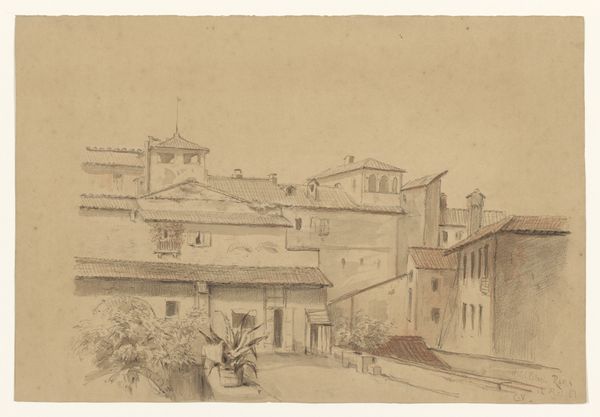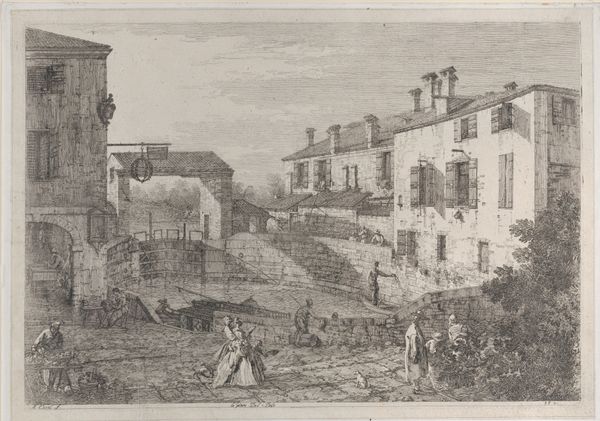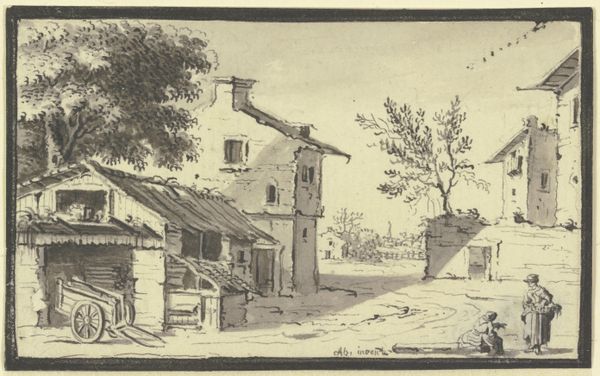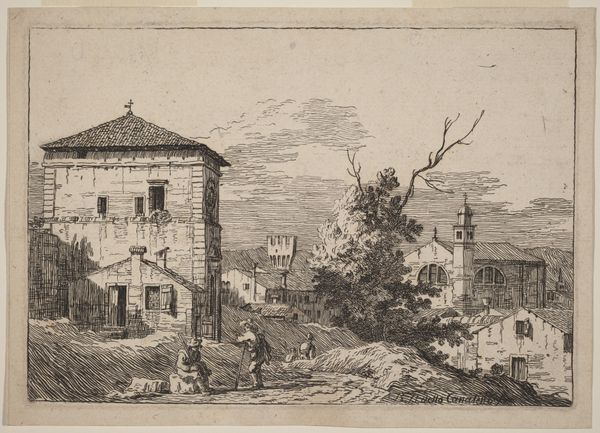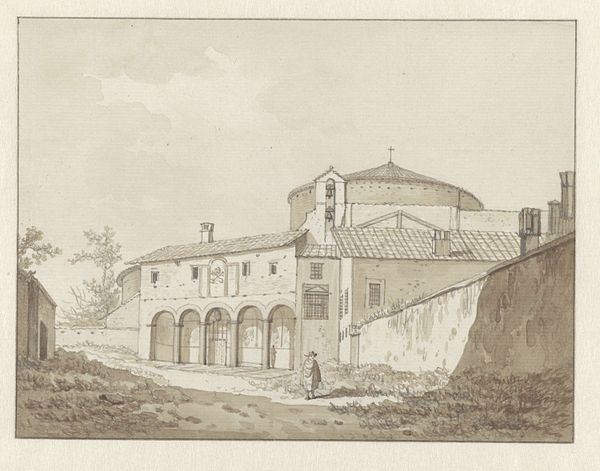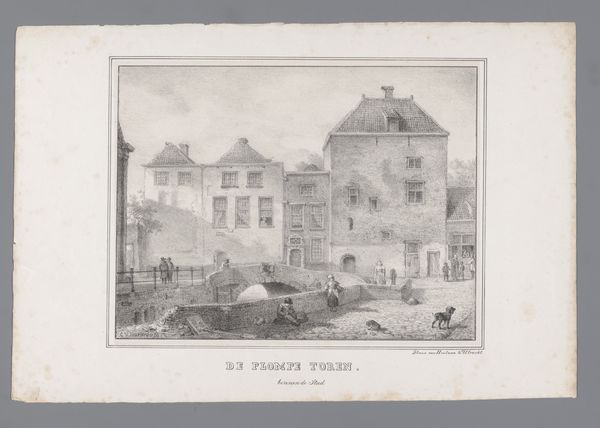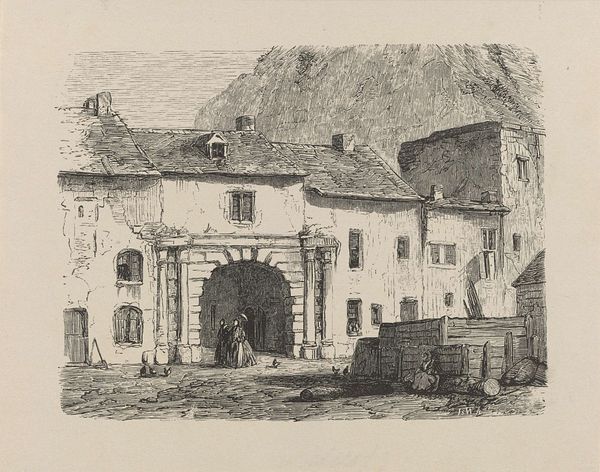
print, etching, woodcut, architecture
# print
#
pen sketch
#
etching
#
etching
#
woodcut
#
cityscape
#
architecture
Dimensions: 105 mm (height) x 131 mm (width) (bladmaal)
Curator: Welcome. Before us hangs a print by Axel Theodor Kittendorff titled "Thorvaldsens atelier i Rom," dating back to 1846. Editor: It's all angular lines and sun-baked walls. Gives a sense of contained, almost secretive activity. The deep shadows intrigue me. Curator: Indeed. The image captures a somewhat uncommon view – the back or service entrance to a creative hub. Kittendorff, a Danish artist working in Rome, presents us with a glimpse into the environment that nurtured artistic production, specifically that of the renowned sculptor Bertel Thorvaldsen. It provides insight to how artistic enterprise intersects with the urban, challenging common conceptions of artistic life. Editor: Right, because the symbolism is there in its depiction of the workplace itself. The studio represents a place of both labor and inspiration, reflecting the myth-making of an artist in a particular place, the Romantic Rome—so desired at that time by north Europeans as a cradle of Western culture. Those blocks scattered around must have been the origin of something we could probably recognize in some museum somewhere now. Curator: Precisely! Think about how studios as they became almost like pilgrimage sites later in the nineteenth and twentieth century – it's the origin. The very ground an artist once stood upon holds a certain power for those who ascribe to the cult of genius. That crumbling stonework, rendered in fine etching, speaks to layers of history. Rome as a palimpsest and Thorvaldsen's atelier nested inside it. Editor: It definitely holds some romantic idea of creativity but through labor, and the actual space where an artist produced, hinting at what inspired them or was part of their creation, and now, our art-historical and personal experience. I think seeing through the symbols gives a whole new perspective on art history itself! Curator: Yes, seeing it from this angle offers a nice tension with grand narratives associated with Neoclassical art, inviting the audience to look at both artistic and social histories. Thank you. Editor: It does provoke curiosity and reveals history.
Comments
No comments
Be the first to comment and join the conversation on the ultimate creative platform.
